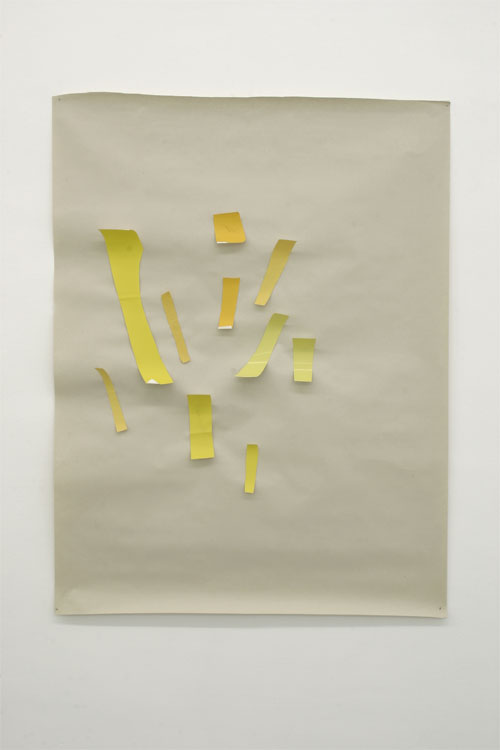MEES – VALENTIN
75003 Paris, Tel : 00 33 (0)1 48 87 42 55
A central figure of the postwar Anvers scene, Guy Mees (1935-2003) left a body of work whose uniqueness defies all attempts at classification. At the intersection of multiple networks of influence, from geometric abstraction to informal art, from minimalism to kinetic art, from the « spatial » current to decorative arts, Guy Mees’s exploration is based on an attempt to place pictorial language on new foundations outside of the spatial limits of a painting, and the search for a complementary and functional balance between the from (the aesthetic object) and the habitat (the living and social space). Beyond an apparent formalist rigour, the works of Mees possess an intrinsic fragility, seeming always in danger of tearing, breakage or extinction. This is because what Mees seeks in space is not so much a principle of stability or a vanishing point, but rather a principle of coexistence between diverse elements, one that supports an infinity of configurations and eludes despotic temptations in order to accommodate diversity, variation and modulation.
From his very first carbon reliefs punctuated by small traces of blue pigments executed in a matériste aesthetic, the boundaries between painting and sculpture tend to be diluted. Up until the most recent series of « paper cutouts » or « plinths », Mess progresses towards a radical simplification of his media and an increasingly direct confrontation with real space. In 1960, Mees gave the name « Lost Spaces » to a series of works made of industrial lace hung on panels or on geometrical, pyramidical or cubic structures, which he placed on the ground or hung on the wall. Inside some of these pieces he placed ultraviolet, blue or mauve neon lights which played on effects of vibration and optical depth. These first « lost spaces » show Mees’s interest in transitory phenomena, and tend, beyond the reference to minimal art and to the ideality of an unlimited pictorial space, to assert the sensuality of the surface « in itself ». The lace, used here as a semi-organic membrane, also makes reference to the utilitarian world of clothing, a boundary-envelope between the intimate space of the body and the social space, a motif that he presents on the wall in the form of small dresses. The presence of neon visible through the lace tends, in itself, to « shed light » on the illusionism of pictorial representation.
In the 1970s, Mees randomly arranged small pastel-coloured paper sticks on sheets of transparent paper, forming something of a precarious rhythmic equation. These summary compositions get their relief through cast shadow effects, and let themselves be agitated by the flow of air. Sometimes, Mees punctuates the transparent sheets with pastel or felt pen stippling, a kind of vestige of a subjectivist gestural.
In 1983, Mees started a new series of « Lost Spaces », relief compositions made of coloured paper cutouts, cut with a knife and pinned directly onto the wall. These vulnerable « bodies » (as he called them) seem like possible residual signs of a shattered pictorial space, disintegrated and then reconfigured in a new mobile forcefield. The angular or rounded contours and their often disrupted linearity form something like incisions in the wall itself, oscillating between an aesthetic of laceration or flashing, in some cases recalling the sensuality of dance, in others evoking the essence of a landscape. These systematically arranged pure colour surfaces shatter the monolithic silence of the architectural score, infusing it with a rhythm, a musicality. Mees presents his lost spaces on a multiplicity of media (tissue paper, newspaper, aluminium, matt or glossy paper), each time modulating the contours, the sizes, the relationships of power and weight between colours, refraction effects and light absorption. These repeated gestures, which extract shape from colour, sometimes seem to hesitate, stop, then resume their course, giving a perceptible form to the irregular trajectory of sensation.
Suspended in the void, without any framework, these figures seem to be searching for a way to attach themselves to space without settling there irrevocably. Their anchoring is only provisional, passing: inscribed in the hollow of their modest presence resides the uncertainty of living in the world without being damaged by it.
Clara Guislain
